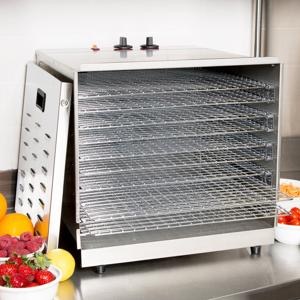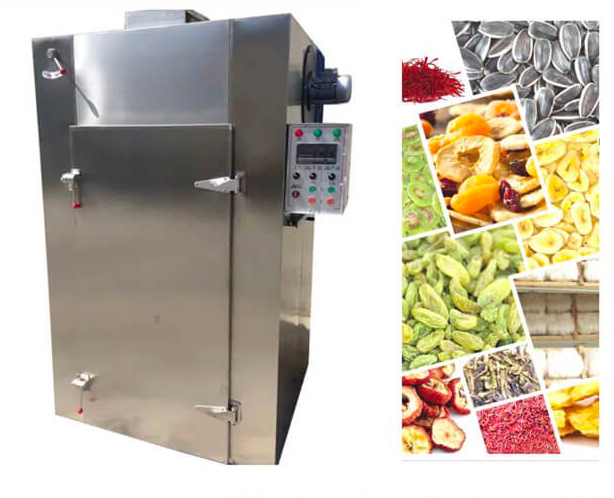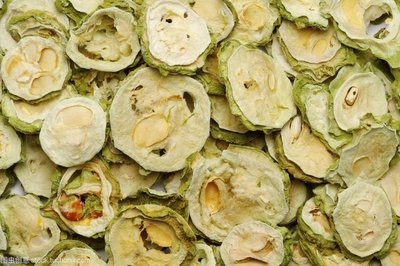
Content Menu
● Understanding Heat Pump Dryers
>> How Heat Pump Dryers Function
● Advantages of Heat Pump Dryers
● Applications of Heat Pump Dryers
● The Food Drying Process
● Components of a Heat Pump Dryer
● The Science Behind Heat Pump Dryers
>> Thermodynamics in Action
● Comparative Analysis with Other Drying Methods
● Future Trends in Heat Pump Drying Technology
● Conclusion
● FAQ
>> 1. What types of foods can be dried using a heat pump dryer?
>> 2. How long does it take to dry food in a heat pump dryer?
>> 3. Are heat pump dryers energy-efficient?
>> 4. Can I control temperature and humidity in a heat pump dryer?
>> 5. What maintenance is required for a heat pump dryer?
Food drying is an essential process in food preservation, enhancing shelf life while maintaining flavor and nutritional value. Among various drying technologies, heat pump dryers have gained popularity due to their efficiency and effectiveness. This article delves into how heat pump dryers work, their advantages, applications, and the overall food drying process.

Understanding Heat Pump Dryers
Heat pump dryers operate on the principle of thermodynamics, specifically utilizing a refrigeration cycle to extract moisture from food. Unlike traditional dryers that rely on direct heat, heat pump dryers recycle air to maintain a consistent drying environment.
How Heat Pump Dryers Function
1. Air Circulation: The process begins with the intake of ambient air, which is then heated using a compressor and a refrigerant system. The heated air is circulated through the drying chamber where it comes into contact with the food.
2. Moisture Absorption: As the hot air passes over the food, it absorbs moisture. The temperature of the air decreases as it picks up moisture from the food.
3. Condensation: The now humid air is directed towards evaporator coils where it cools down. The cooling process causes moisture to condense into water droplets, which are collected and drained away.
4. Recirculation: The cooled and dehumidified air is reheated and cycled back into the drying chamber, continuing the process until the food reaches the desired dryness level.
This cycle allows heat pump dryers to operate at lower temperatures compared to conventional methods, preserving the quality of the food being dried.
Advantages of Heat Pump Dryers
Heat pump dryers offer several benefits over traditional drying methods:
- Energy Efficiency: They consume significantly less energy, making them a cost-effective option for large-scale operations.
- Quality Preservation: The low-temperature drying process helps retain nutrients, color, and flavor in food products.
- Versatility: Suitable for a wide range of products including fruits, vegetables, meats, and herbs.
- Environmentally Friendly: By using ambient heat and minimizing energy consumption, they reduce carbon footprints.
- Automated Control: Many models come equipped with advanced controls for temperature and humidity management, ensuring optimal drying conditions.
Applications of Heat Pump Dryers
Heat pump dryers are versatile machines used across various industries:
- Agriculture: For drying fruits and vegetables like apples, tomatoes, and herbs.
- Food Processing: Used in meat processing for jerky production or seafood drying.
- Pharmaceuticals: For drying medicinal herbs while preserving their active ingredients.
- Construction: Employed in drying wood products to prevent warping or damage.

The Food Drying Process
The food drying process using a heat pump dryer involves several steps:
1. Selection of Food: Choose high-quality ingredients suitable for drying.
2. Preparation:
- Clean the food to remove dirt and contaminants.
- Slice or cut the food into uniform pieces to ensure even drying.
3. Loading into Dryer: Arrange the prepared food on trays within the dryer chamber.
4. Setting Parameters:
- Set the desired temperature (typically between 20°C to 80°C).
- Adjust humidity settings based on the type of food being dried.
5. Drying Cycle: Start the dryer and allow it to run for several hours (usually 6-8 hours), depending on the moisture content of the food.
6. Storage: Once dried, store the food in airtight containers or vacuum-sealed bags to prevent reabsorption of moisture.
Components of a Heat Pump Dryer
A typical heat pump dryer consists of:
- Heat Pump Unit: Contains compressors and evaporators for heating and cooling cycles.
- Drying Chamber: An insulated space where food is placed for drying.
- Fans: To circulate air evenly throughout the chamber.
- Control System: Automates temperature and humidity adjustments based on set parameters.
The Science Behind Heat Pump Dryers
Understanding the science behind heat pump dryers can enhance your appreciation for this technology.
Thermodynamics in Action
Heat pumps operate based on principles derived from thermodynamics. They utilize a refrigeration cycle that involves four main processes:
1. Evaporation: The refrigerant absorbs heat from the environment (or from within the dryer) as it evaporates in the evaporator coils.
2. Compression: The gaseous refrigerant is compressed by a compressor, increasing its pressure and temperature.
3. Condensation: The high-pressure gas moves to condenser coils where it releases its absorbed heat into the air or water used for heating purposes before condensing back into a liquid state.
4. Expansion: The refrigerant then passes through an expansion valve where its pressure drops, allowing it to return to its gaseous state as it absorbs heat again from its surroundings.
This continuous cycle allows heat pump dryers to efficiently extract moisture while maintaining low temperatures that are critical for preserving delicate foods.
Comparative Analysis with Other Drying Methods
To better understand where heat pump dryers stand in relation to other methods, consider this comparison:
| Feature | Heat Pump Dryer | Conventional Dryer | Solar Dryer |
| Energy Efficiency | High | Moderate | Variable |
| Temperature Control | Precise | Limited | Dependent on weather |
| Environmental Impact | Low | Moderate | Low |
| Operating Cost | Low | Moderate | Low |
| Speed of Drying | Moderate | Fast | Slow |
Heat pump dryers excel in energy efficiency and environmental impact when compared to conventional dryers while providing better control over temperature than solar dryers. However, they may take longer than conventional methods but are worth it for quality preservation.
Future Trends in Heat Pump Drying Technology
As technology advances, several trends are emerging in heat pump dryer development:
- Smart Technology Integration: Incorporating IoT (Internet of Things) technology allows users to monitor and control their dryers remotely via smartphones or computers, optimizing efficiency and convenience.
- Enhanced Energy Recovery Systems: Future models may feature improved systems that capture waste heat more effectively, further reducing energy consumption during operation.
- Modular Designs: Innovations are leading to modular designs that allow users to scale their systems according to production needs without significant upfront investment.
- Sustainability Focus: With increasing awareness around sustainability, manufacturers are developing eco-friendly materials for dryer construction while enhancing energy efficiency standards across all models.
Conclusion
Heat pump dryers represent an innovative solution for efficient food drying while maintaining quality. Their ability to recycle air not only conserves energy but also enhances product preservation. With applications spanning various industries from agriculture to pharmaceuticals, heat pump technology is paving the way for sustainable practices in food processing. As technology continues to evolve, we can expect even greater advancements that will further enhance efficiency and sustainability in food preservation methods.

FAQ
1. What types of foods can be dried using a heat pump dryer?
Heat pump dryers can effectively dry a variety of foods including fruits (like apples and mangoes), vegetables (such as carrots and tomatoes), meats (like jerky), seafood (fish and shrimp), herbs, and even grains.
2. How long does it take to dry food in a heat pump dryer?
The drying time varies based on the type of food and its moisture content but typically ranges from 6 to 8 hours for most products when set at appropriate temperatures (65°C).
3. Are heat pump dryers energy-efficient?
Yes, heat pump dryers are highly energy-efficient compared to traditional dryers as they utilize ambient heat and recycle air within the system, significantly reducing energy consumption by up to 70%.
4. Can I control temperature and humidity in a heat pump dryer?
Most modern heat pump dryers come equipped with automated control systems that allow users to set specific temperature and humidity levels tailored to different types of foods being dried.
5. What maintenance is required for a heat pump dryer?
Regular maintenance includes cleaning lint filters, checking refrigerant levels, inspecting fans for obstructions, and ensuring that evaporator coils are free from buildup to maintain efficient operation.












